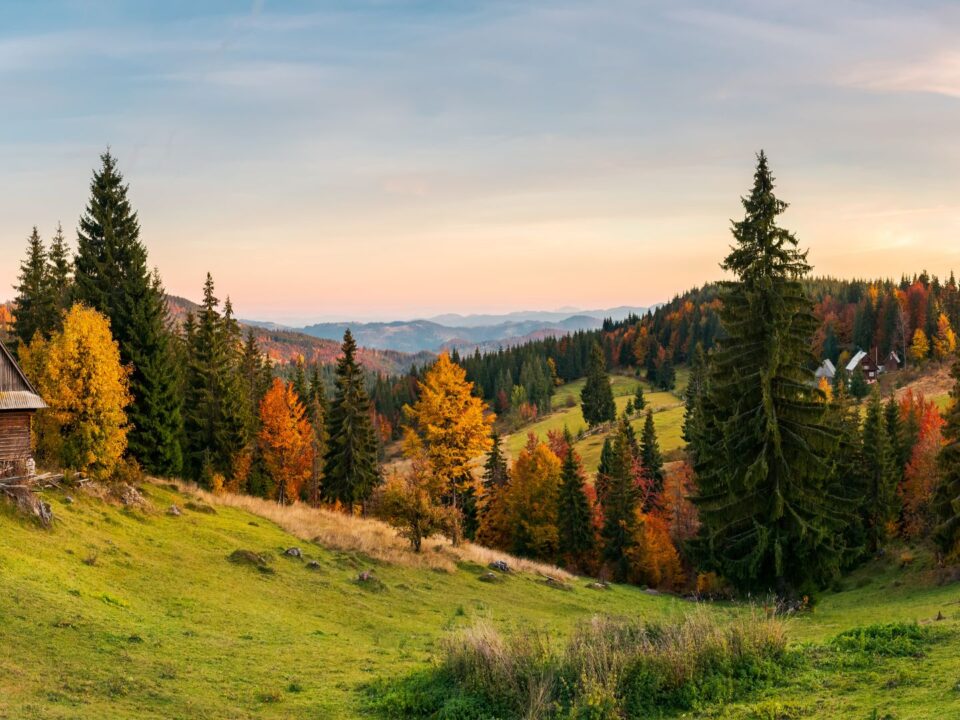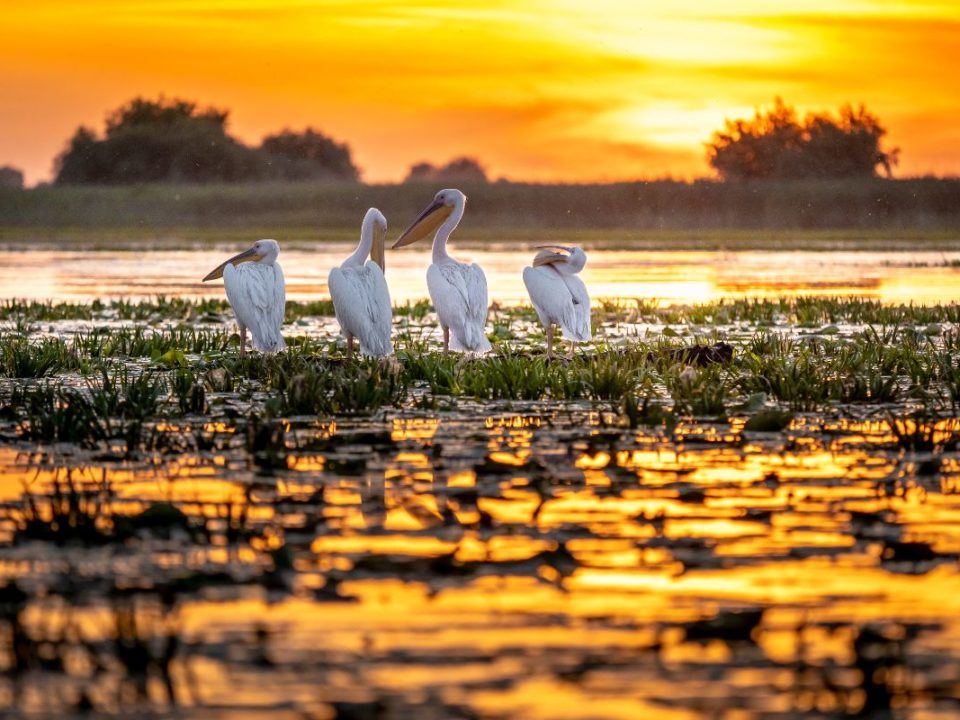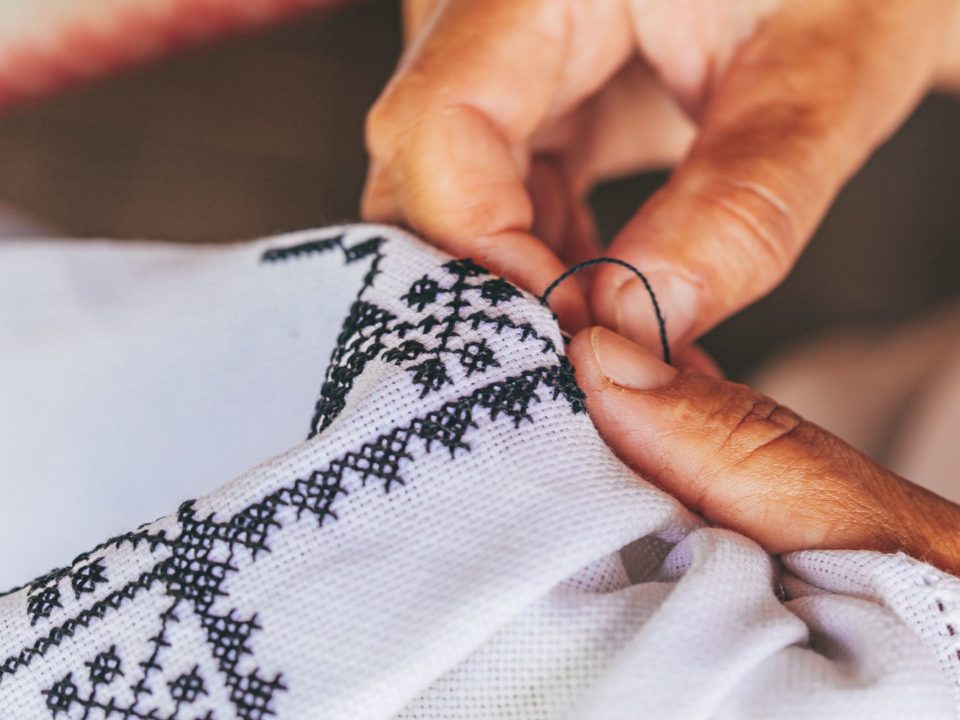Sibiu: Inside Romania’s idyllic heart
March 28, 2014Sighisoara: Here there be vampires
April 29, 2014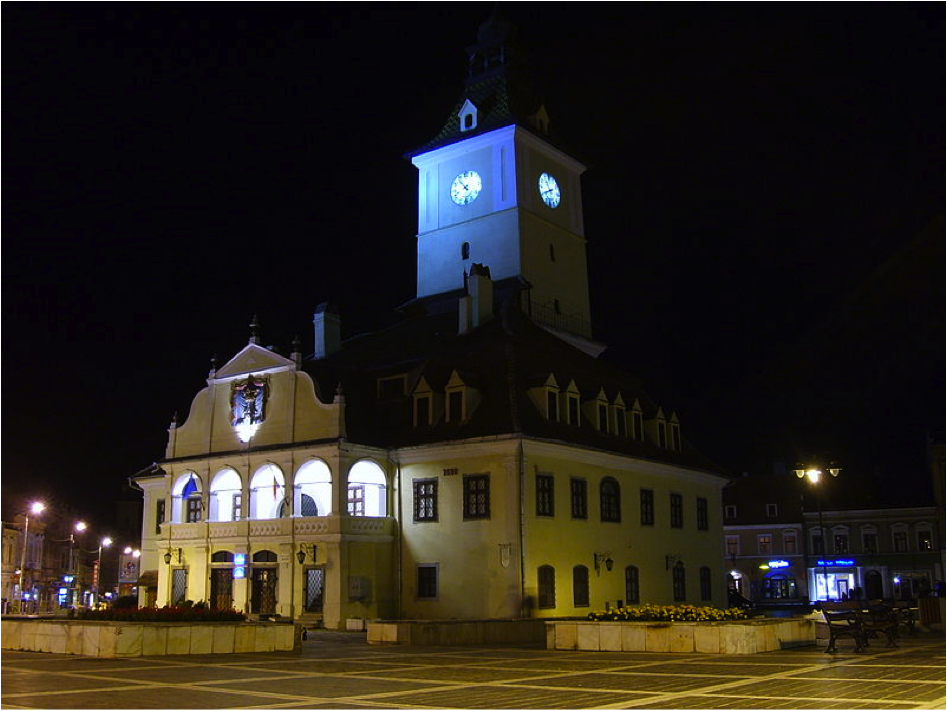
A view of the Braṣov City Council building by night.(Source)
My Romanian holiday fantasy continues eastward and takes me to Brasov (Braṣov in Romanian), one of Transylvania’s finest cities. It was originally an old Saxon settlement, the birth place of the Romanian national anthem, and home to the Golden Stag Festival which features world-class musical entertainment year after year. I can’t wait to explore!
Crowned for greatness
In the Middle Ages, Braṣov was known as Corona or Kronstadt, and the crown is still part of the city’s coat of arms. King Endre II of Hungary sent Teutonic Knights and German colonists to fortify and develop Braṣov in the early 1200s. The king valued the city so much that he put his crown in its name – and it lives up to this honor!
Braṣov’s location at a European trade crossroads allowed it to absorb many international influences from both east (the Ottoman Empire) and west (Austria-Hungary and Germany). From the looks of it, I am in for another treat of Romanian-Saxon culture in my visit to Braṣov. I am curious to see how the three original Saxon settlements – Corona, Martinsberg, and Bartholomä – merged together into one bustling city.
City sights in the Carpathians’ lap
Braṣov is not only a commercial but also a tourist hub. It’s the largest Romanian city in the Carpathians, and its location favors exploration to the south and the capital of Bucharest and to the east and into Moldavian monastery country.
However, I would not be too quick to leave Braṣov. Its old town is well preserved and partially restored with UNESCO funds. I am particularly interested in the Black Church which was built in the late 14th century by Bulgarian craftsmen. It stands at the heart of the old Corona town, and it got its name after a large fire smeared ashes and soot on its walls.
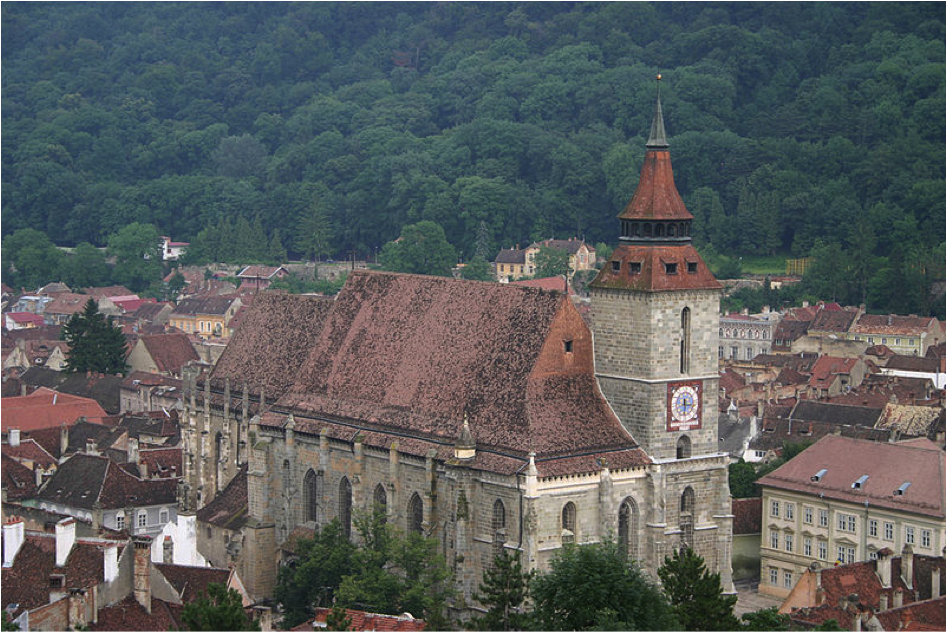
The Black Church, or Biserica Neagra, in the old town of Braṣov.(Source)
As one of Bremen’s adopted sons, I love its own old town of Schnoor which sports some of the smallest streets I have ever seen. Braṣov does not lag behind: it is home to Europe’s third-narrowest street, Strada Sforii. It is close to the Schei Gate and measures 111 centimeters at its tightest.
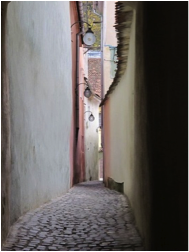
String Street in Brasov.(Source)
Strada Sforii, or “String Street”, was originally constructed as a quick passage for firemen according to old documents. It has since become a favorite meeting spot and a tourist attraction for all its 80 meters.
Braṣov – city of music
Another important trait of Braṣov is its musicality, and I am especially attracted to places like that. For starters, Romania’s national anthem – “Awaken, Romanian!” – was first sung here during the tumultuous year of 1848, the time of the Habsburg revolutions. Andrei Mureṣanu’s lyrics were put to a popular melody, and the tune has been part of Romania’s identity ever since. Maybe I make it for National Anthem Day – July 29.
Starting in 1968, Braṣov has been hosting the Golden Stag Festival where local and international stars present their art. The event has seen greats like James Brown, Diana Ross, INXS , Kylie Minogue, and P!nk rock the stage.
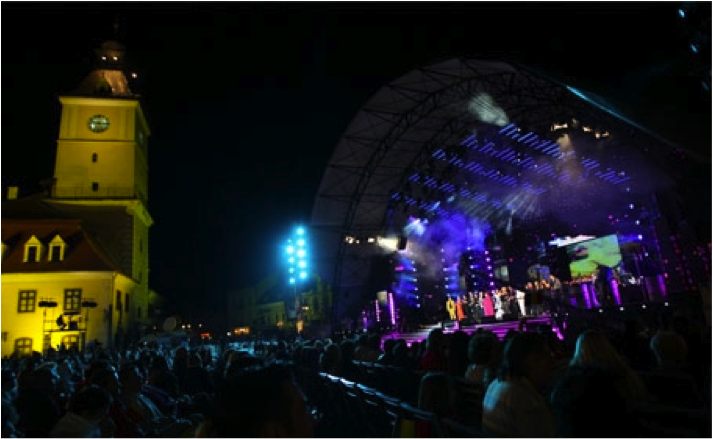
The Golden Stag festival on the brink of the Old Town in Braṣov. (Source)
Since 2006, the Festival has a floating date which usually depends on the schedule of the major international artist who headlines the event. I hope to get lucky and catch this year’s celebration, which blends Romanian and world music in an irresistible tasty mix.
***
Old and modern, amid broad mountain ranges and bound by narrow streets, Braṣov definitely wears its old crowned name well. It makes a perfect second leg to my trip in Romania, and as far as possibilities for the next step go, I am definitely spoiled for choice.

